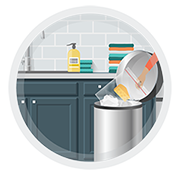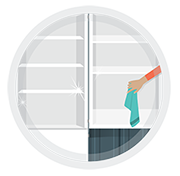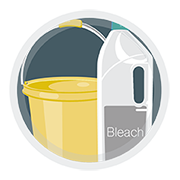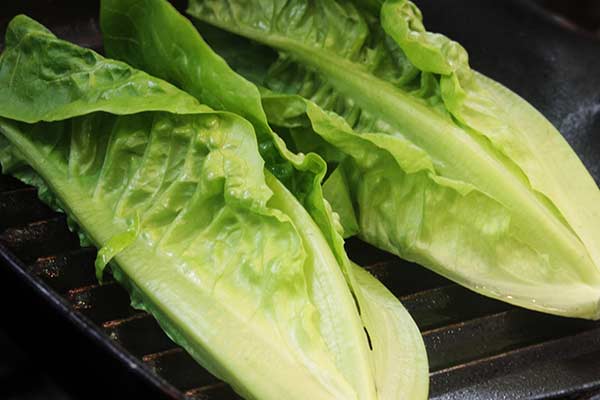Another outbreak of E. coli is being linked to Romaine Lettuce.
CDC is advising that U.S. consumers not eat any romaine lettuce, and retailers and restaurants not serve or sell any, until more is learned about the outbreak.
The CDC has warned that consumers who have any type of romaine lettuce in their home should not eat it and should throw it away, even if some of it was eaten and no one has gotten sick. This advice includes all types or uses of romaine lettuce, such as whole heads of romaine, hearts of romaine, and bags and boxes of precut lettuce and salad mixes that contain romaine, including baby romaine, spring mix, and Caesar salad.
If you do not know if the lettuce is romaine or whether a salad mix contains romaine, do not eat it and throw it away.
Wash and sanitize drawers or shelves in refrigerators where romaine was stored. Follow the five steps below to clean your refrigerator.
Restaurants and retailers should not serve or sell any romaine lettuce, including salads and salad mixes containing romaine.
Take action if you have symptoms of an E. coli infection:
- Talk to your healthcare provider.
- Write down what you ate in the week before you started to get sick.
- Report your illness to the health department.
- Assist public health investigators by answering questions about your illness.
Thirty two people from 11 states have reportedly been infected with the outbreak strain of Shiga toxin-producing E. coli O157:H7
Earlier this year another E. coli outbreak infected more than 200 people in 30 states, killing five people. In that outbreak, the CDC traced the tainted lettuce back to Yuma, Arizona. A tainted canal was ultimately identified as the culprit.
How to Clean your Refrigerator After a Food Recall
Items needed to clean your refrigerator:
- Sealed Bags
- Warm, Soapy Water
- Clean Towels
- Optional: Water + Bleach
STEP 1 – Throw out recalled food

- Throw out the recalled food, and any other foods stored with it or touching it.
- Put it in a sealed bag in the garbage.
- If the recalled food was stored in a reusable container, wash it with warm, soapy water before reusing.
STEP 2 – Empty your Refrigerator
- Empty the rest of the items in your refrigerator and put them on a counter or table while you clean.
- Take out shelving, drawers, and any other removable parts.
- Don’t leave unrefrigerated food out for more than two hours.

STEP 3 – Wash Removable Parts
- Wash shelving, drawers, and any other removable parts by hand with warm, soapy water.
- Dry with a clean towel.
- Don’t run cold glass shelves or drawers under hot water – the glass could crack. Let them come to room temperature first.
STEP 4 – Clean and Sanitize Inside the Refrigerator
- Wipe the inside of the empty refrigerator with warm, soapy water, then wipe with clean water to rinse off soap.
- Dry with a clean towel.
- Don’t forget to wipe inside the doors and any drawers that cannot be removed.

* Optional Step
Use a solution of 1 tablespoon of liquid bleach in 1 gallon of water to sanitize your refrigerator. Do this after cleaning it with warm, soapy water.
STEP 5 – Return Shelves, Drawers, and Food
- Put the shelves, drawers, and other removable parts back in the refrigerator, along with the other items you took out.
- Wipe food and drink containers with warm, soapy water before returning to the clean refrigerator.
And don’t forget!
- Wash your hands with warm water and soap once you’ve finished cleaning.
- Use warm, soapy water to wipe kitchen counters that held food, drinks, refrigerator parts and any cleaning materials.
- Wash any towels you used to dry the refrigerator before using them again.









